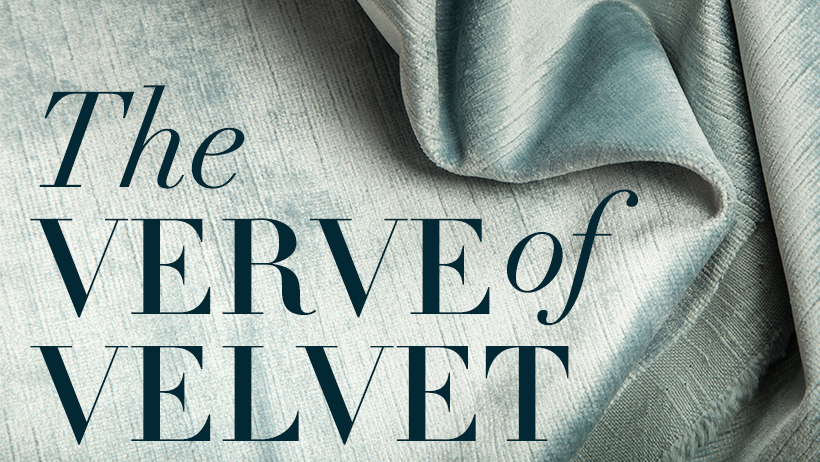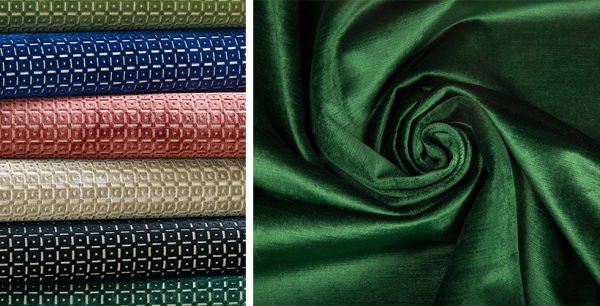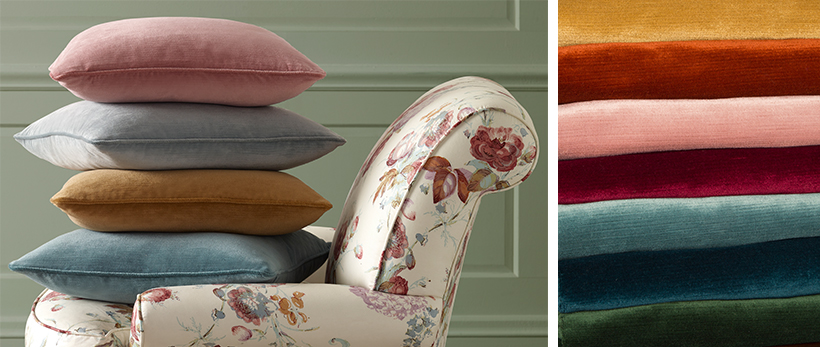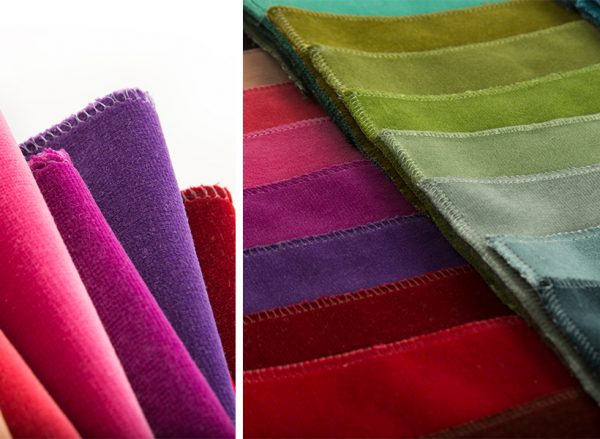Ever wonder how one of your favorite fabrics is made? Not just how the design comes to be, but how the fibers are married and become the plush textures you hold in your hand? We sat down with our product development team to find out – Velvet: how it’s made.
There are two types of looms in which a pile velvet can be produced.
On a regular velvet loom, two single cloth structures are woven face to face, one above the other, with each pile end interlacing first with one fabric and then the other. Afterwards, the pile is cut automatically on the loom by a knife that travels back and forth through the center of the pile, separating the upper and lower fabrics into two single cloths.
Velvets can also be produced on a wire loom. The pile is formed by looping the yarns over the wire, and as each wire is withdrawn its knife severs the loop, producing the cut pile. Conversely, in an uncut pile, the loops are not cut which presents a different appearance on the surface. The wire used in this method is a plain and without the knife. Velvets are also produced using both the cut and uncut method. This construction creates highs and lows on the surface of the velvet creating design interest and depth.
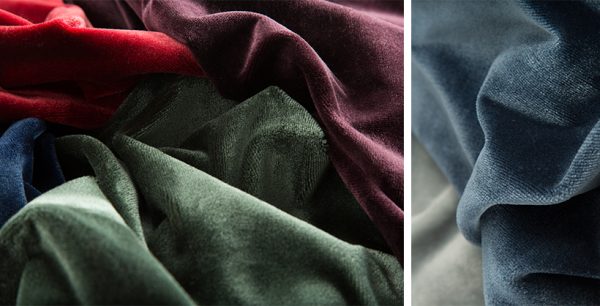 Once a velvet is woven, it is put through the process of dyeing and finishing. The velvet is piece dyed in 300 to 500 yard baths, which means a fabric is dyed after it is woven, as opposed to the actual yarns being dyed and then woven to make the fabric. The pieces are sewn together end to end and put through a continuous dyeing system. The formula must be followed each time for the colors to be consistent. The process is similar to creating your favorite recipe. The ingredients must be measured and followed in order for the taste to be the same each time. Once the color is achieved, depending on the content, the velvet is then put through many finishing processes. In many cases the velvet is tumbled and brushed. Backing is then applied and the goods are rolled and rerolled. Because the fabric is delicate, the goods are shipped in a special package called suspended cartons. This will keep the pressure off the fabric and will prevent unwanted markings in the pile.
Once a velvet is woven, it is put through the process of dyeing and finishing. The velvet is piece dyed in 300 to 500 yard baths, which means a fabric is dyed after it is woven, as opposed to the actual yarns being dyed and then woven to make the fabric. The pieces are sewn together end to end and put through a continuous dyeing system. The formula must be followed each time for the colors to be consistent. The process is similar to creating your favorite recipe. The ingredients must be measured and followed in order for the taste to be the same each time. Once the color is achieved, depending on the content, the velvet is then put through many finishing processes. In many cases the velvet is tumbled and brushed. Backing is then applied and the goods are rolled and rerolled. Because the fabric is delicate, the goods are shipped in a special package called suspended cartons. This will keep the pressure off the fabric and will prevent unwanted markings in the pile.
There are two types of pile that gives the individual velvet a completely different look. The first is referred to as an upright pile. This is when the yarns are standing up. The second is called a panne velvet with a flattened pile that is laid in one direction. The word pile comes from the Latin word for hair or fur.
With all that goes into bringing a velvet to market, it really makes you appreciate and understand its special characteristics and personality.
Kravet Inc. offers a wide assortment of velvets across all of its brands, including new introductions from Kravet, Lee Jofa, Brunschwig & Fils and other distributed brands. Explore velvets here.

